Aid convoys have yet to reach Ethiopia's war-ravaged Tigray region almost a week after the government announced a humanitarian truce.
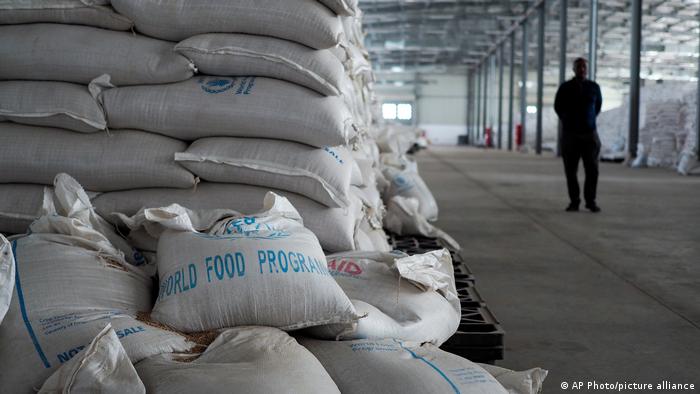
Barely any aid is reaching Ethiopia's Tigray region
\
Convoys carrying much-needed humanitarian supplies to Ethiopia's northern Tigray region are still stuck in Semera, the capital of the neighboring Afar region, despite Ethiopia's government declaring a unilateral humanitarian truce on March 24.
"There are still no convoys headed north [to Tigray]," a humanitarian source in Afar, who wishes to remain anonymous, told DW.
More than 700 trucks of supplies per week are currently needed in Tigray, where more than 5 million people are in urgent need of assistance. But not a single truck has entered the northern region in over three months.
Rather, trucks laden with aid have been stranded in Semera since mid-December, waiting for clearance to travel into the region.
Because of the delay, some aid organizations have even unloaded food or distributed it to communities outside of Tigray, including in Afar, to avoid wasting it.
The United Nations has warned of soaring rates of acute malnutrition in Tigray, and estimates that hundreds of thousands of people face famine in the region.
Airlifts getting in
There have also been no reports of increased cargo flights by the United Nations and the Red Cross since the government of Prime Minister Abiy Ahmed announced the truce last Thursday.
Airlifts carrying medicine and food supplies from the capital Addis Ababa to the regional capital Mekele resumed in January, but cover only about 4% of health needs on the ground, according to the UN's humanitarian agency OCHA.
Convoys carrying much-needed humanitarian supplies to Ethiopia's northern Tigray region are still stuck in Semera, the capital of the neighboring Afar region, despite Ethiopia's government declaring a unilateral humanitarian truce on March 24.
"There are still no convoys headed north [to Tigray]," a humanitarian source in Afar, who wishes to remain anonymous, told DW.
More than 700 trucks of supplies per week are currently needed in Tigray, where more than 5 million people are in urgent need of assistance. But not a single truck has entered the northern region in over three months.
Rather, trucks laden with aid have been stranded in Semera since mid-December, waiting for clearance to travel into the region.
Because of the delay, some aid organizations have even unloaded food or distributed it to communities outside of Tigray, including in Afar, to avoid wasting it.
The United Nations has warned of soaring rates of acute malnutrition in Tigray, and estimates that hundreds of thousands of people face famine in the region.
Airlifts getting in
There have also been no reports of increased cargo flights by the United Nations and the Red Cross since the government of Prime Minister Abiy Ahmed announced the truce last Thursday.
Airlifts carrying medicine and food supplies from the capital Addis Ababa to the regional capital Mekele resumed in January, but cover only about 4% of health needs on the ground, according to the UN's humanitarian agency OCHA.
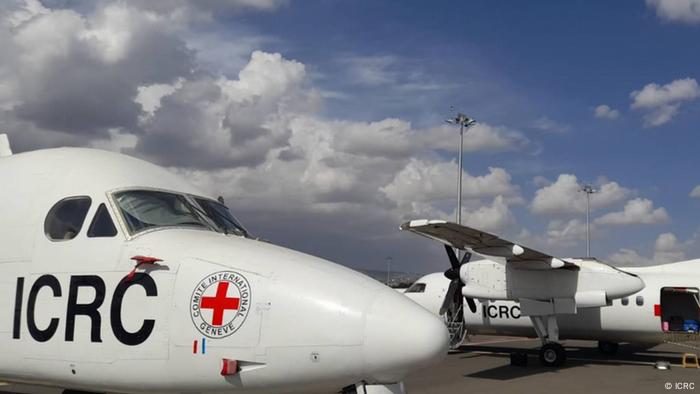
Airlifts have been reaching regions in need of aid
Acute fuel shortages are also making it difficult for organizations to distribute the airlifted aid outside of Makele. As a result, those living in rural Tigray are getting little or no aid at all.
Humanitarian workers and diplomats still hope that the government's announcement of the truce will soon spell an end to the aid blockade.
"We hope that the humanitarian truce will allow us to send humanitarian convoys to the Tigray regions, which will enable us to contribute to alleviating the dire needs of the Tigray population," said Fatima Sator, Ethiopia spokesperson for the International Committee of the Red Cross.
Tigrayans in Afar region
Leaders from Tigray said on Monday that they were temporary ceasing hostilities.
Afar Police Commissioner Ahmed Harif told Reuters news agency on Monday that fighting was ongoing in two of the six districts occupied by Tigrayan fighters, and there was a "significant" buildup of Tigrayan forces along the border to Afar.
Militias in Afar confirmed to DW on Tuesday that fighting is ongoing around the town of Berhale in the region's north, not far from the border to Tigray.
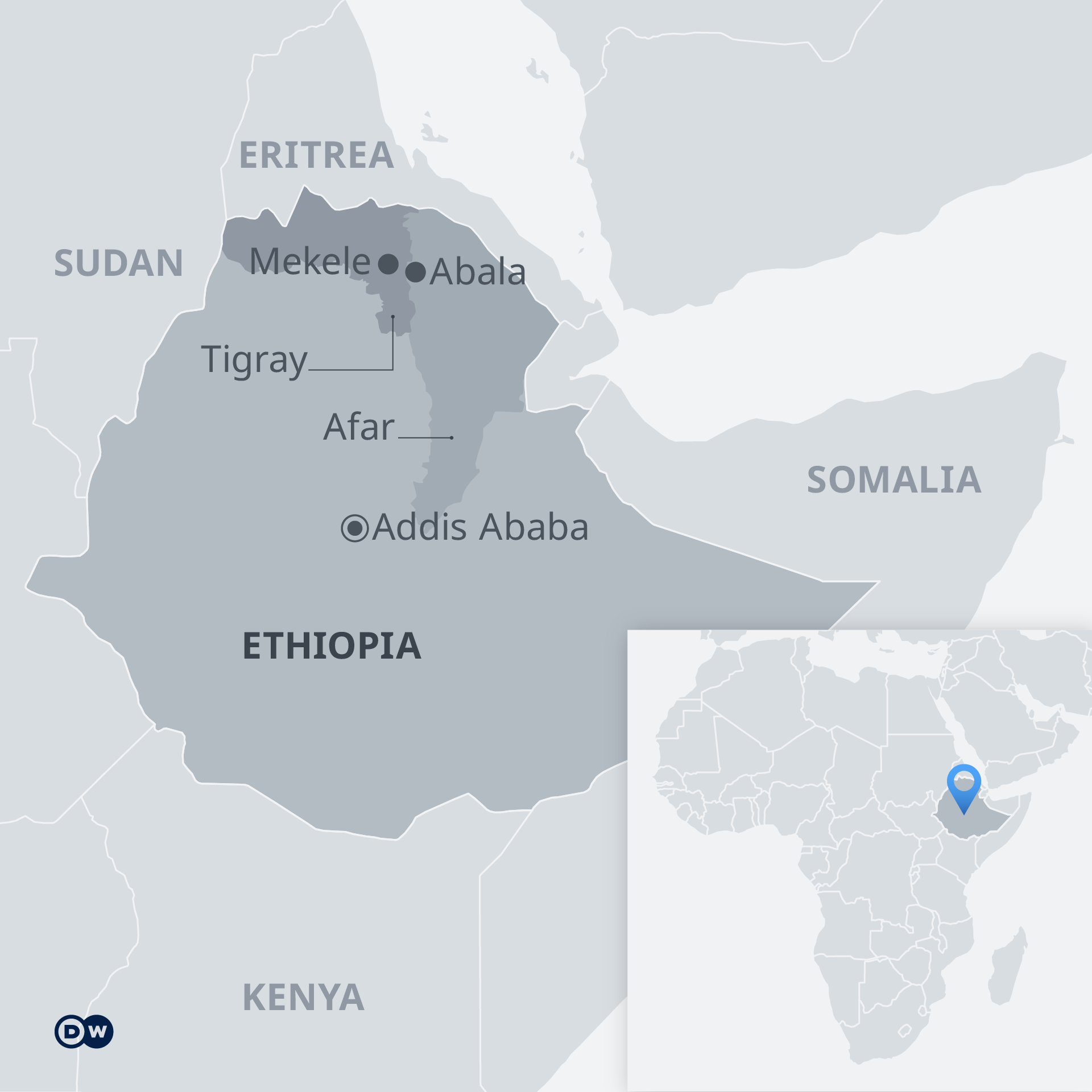
Fighting in northern Afar flared in mid-January when Tigrayan forces crossed to the border town of Abala before advancing further into the region.
The federal government says that the aid trucks stuck in Semera since December are unable to leave because Tigrayan forces are blocking the route the trucks would take near Abala.
However, a humanitarian worker based in Addis Ababa told DW that fighting around Abala had obstructed aid for "a few days only" in January.
He said that that main reason for the continued delays to the aid delivery are procedures of local Afar authorities and the security of aid convoys within Afar-controlled territory.
Convoys attacked
Outside of Tigray, some additional 4 million people in Ethiopia are in need of aid, according to the United Nations, primarily in the Amhara and Afar regions, which have also been heavily affected by the conflict.
Dispatching aid within Afar has become a struggle.
Trucks carrying food to communities within Afar have been stopped and looted in recent weeks; the most-recent attack was on a World Food Programme convoy on March 20.
It's unclear who was behind this latest attack.
Afar fighters may have targeted the trucks in the mistaken belief that the convoy was headed to Tigray when it was actually taking aid to Afar communities.
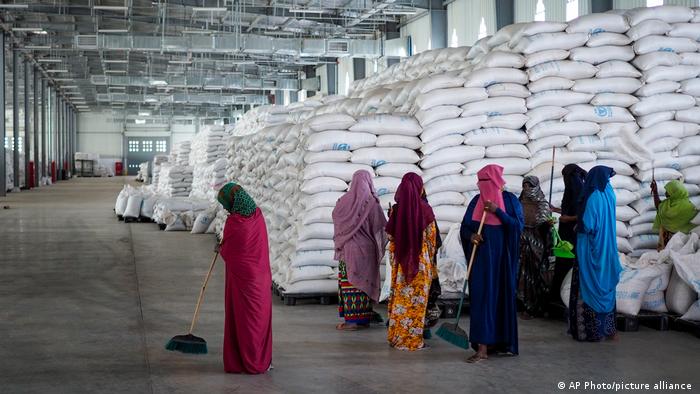
These sacks of food, earmarked for Afar and Tigray regions, face distribution fraught with difficulties
There has been growing frustration towards aid agencies within the Afar population. Due to the recent fighting in Afar, more than 300,000 people have been displaced from Afar's Zone 2.
They have so far received little in the way of food, drinking water, shelter or clothing, causing resentment and suspicion against foreign aid organizations taking aid to Tigray.
However, the attack on the aid convoy could also have been carried out by other organized groups wanting to sabotage aid delivery or peace negotiations.
Eritrea's murky role
The intentions of Eritrea in the Tigray conflict, for instance, remain unclear.
Eritrean forces have been fighting against Tigrayan forces ever since the conflict started in November 2020.
In February, Tigrayan leaders accused Eritrean mercenaries of initiating violence in Afar, which borders Eritrea to the southeast, forcing Tigrayan troops to retaliate.
DW could not independently verify this information due to a lack of access to the region and a telecommunications blackout.
"An important element is what role is Eritrea playing, both in terms of possibly creating the security situation that led to the [Tigray] occupation of parts of Afar and perhaps being behind some of the attacks on the aid convoy in Afar," said William Davison, a senior Ethiopia analyst for the International Crisis Group, an independent think thank.
"There is a possibility that Eritrea is playing a spoiler role, as it does not want to see the TPLF [Tigray People's Liberation Front] recover legitimacy and standing as part of a peace process," he said.
Building trust
As both parties — the TPLF and Abiy's government — advance conditions for the implementation of a truce, analysts say that both sides need to make allowances.
This would mean the progressive withdrawal of Tigrayan forces from Afar while the federal government simultaneously opens up routes for humanitarian convoys into Tigray.
Only then could enough trust be built to, eventually, reach a peaceful settlement in the 17-month-old conflict, analysts say.

Ethiopian forces have declared a cease-fire
"For a peace process to get off the ground, the federal government and its regional allies are going to have to actually allow the consistent delivery of sufficient aid to Tigray," Davison said.
"Announcing a unilateral truce with the stated intention of addressing the humanitarian situation needs to be matched by action, otherwise it will have no effect on resolving the conflict," he noted.
Difficult national dialogue
More generally, building trust among communities is a daunting task in today's Ethiopia. The conflict in the north is only one of the country's many territorial and political disputes.
At the end of 2021, Prime Minster Abiy Ahmed launched a long-awaited national dialogue, which aims to bridge divides between ethnic groups and promote unity within the Horn of Africa nation.
A commission was established to oversee the process after a parliamentary vote on December 29.
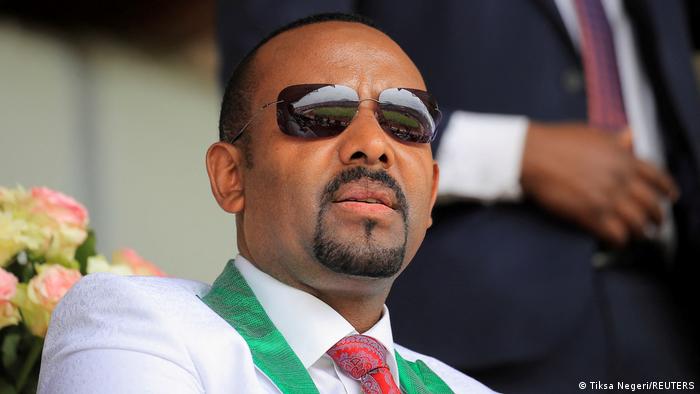
Ethiopia's Prime Minister Abiy Ahmed controversially won the Nobel Peace Prize
But the initiative has already been met with skepticism, and few in the opposition believe it's inclusive and independent enough to be credible.
The dialogue excludes some of Ethiopia's most influential regional opposition groups, namely the Oromo Liberation Army, as well as the Tigray People's Liberation Front.
The government has labeled both groups as terrorist organizations.
Other major parties, such as the Oromo Liberation Front and the Oromo Federalist Congress, which were invited to participate, have boycotted the dialogue.
"We do not believe that a national dialogue that does not include all stakeholders and is led by a neutral body can resolve all outstanding issues facing the country," the Oromo Federalist Congress said in a statement on Sunday.
Ethiopia's path to peace will be a long one, it seems.
The Tigray conflict has absorbed much of the government's attention and resources since November 2020.
Ending the war would enable Prime Minister Abiy Ahmed to shift his focus back to other security issues and other divisions. But the multitude of actors involved will make this task particularly difficult.
No comments:
Post a Comment